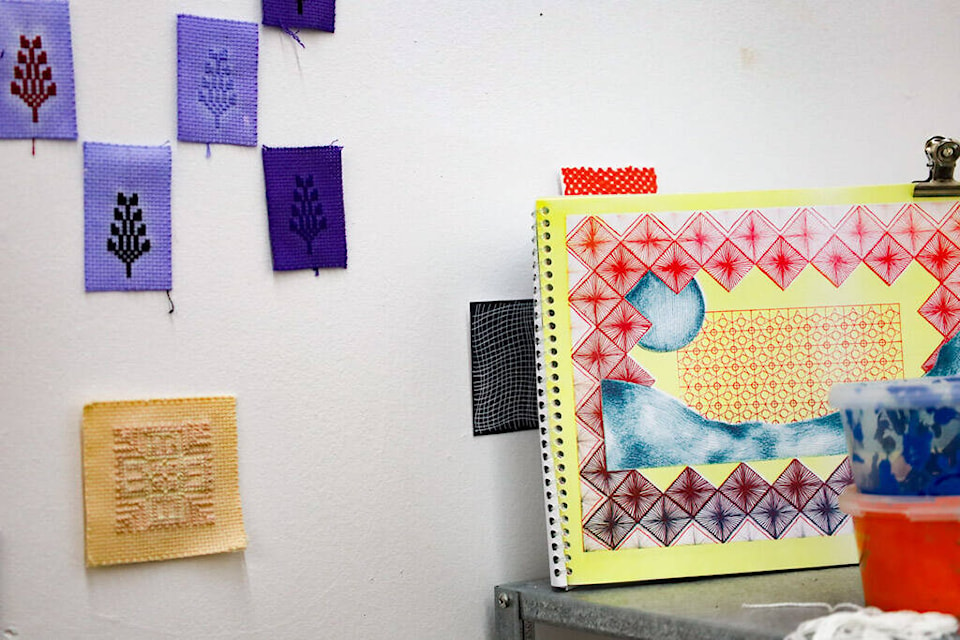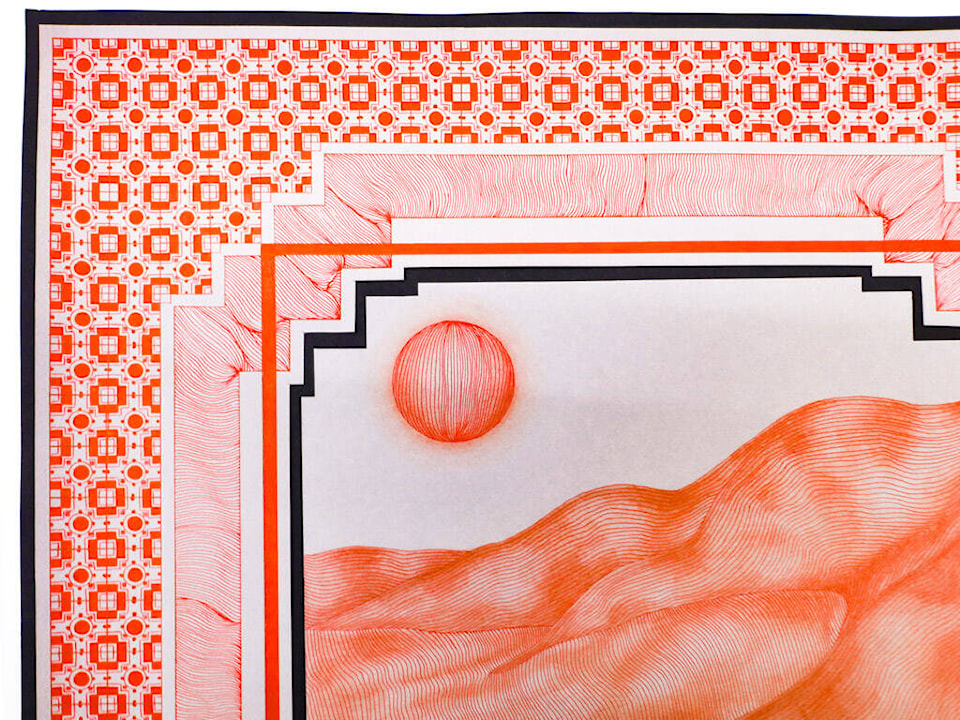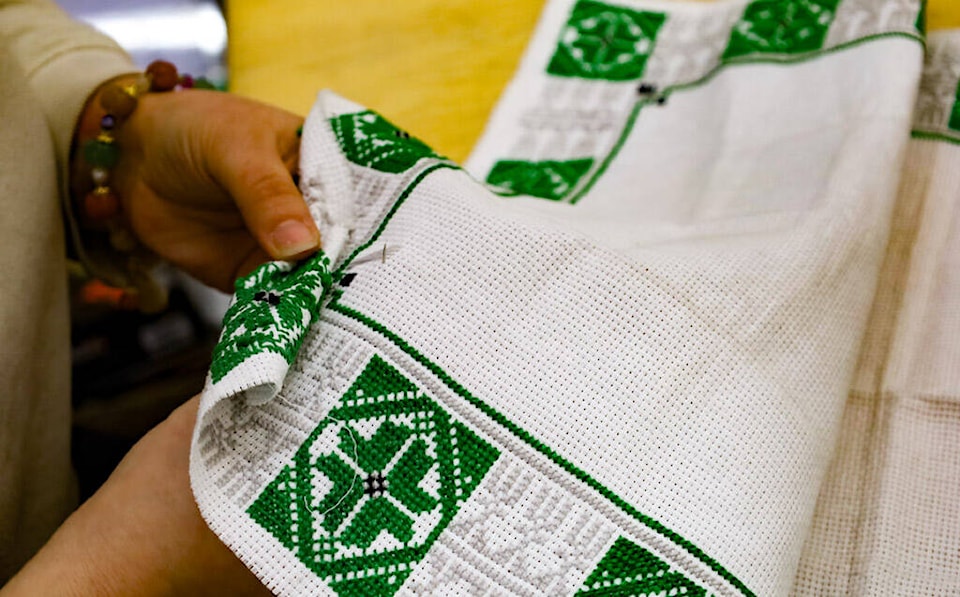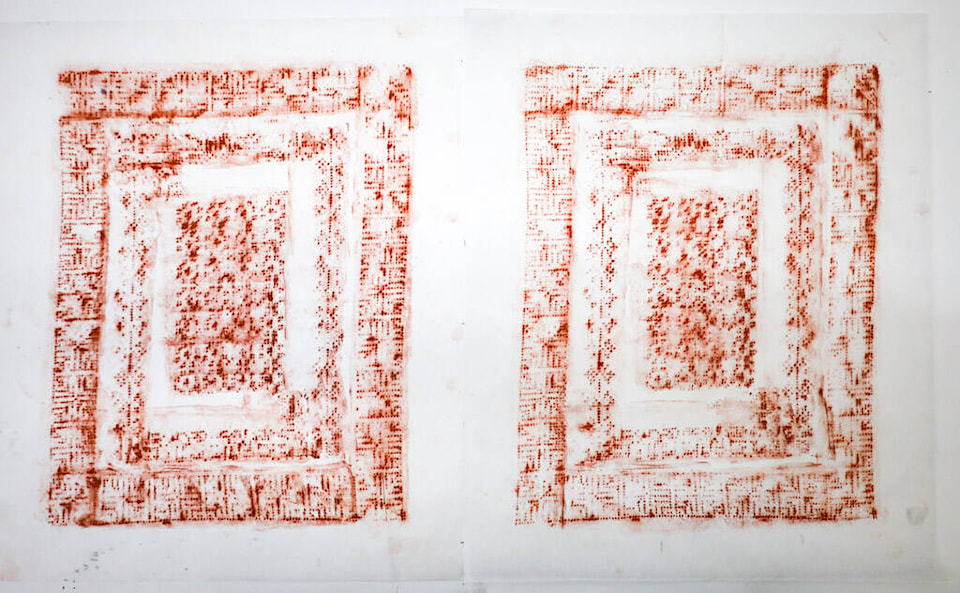By: Radha Agarwal
It’s a cold January day when Rawan Hassan unlocks the back door of her studio in Vancouver, and begins to climb a dark, narrow staircase. It ends at a multi-studio floor which has a maze-like hallway with several doors.
She steps into one of them and reveals a dull box-shaped space, juxtaposed by the colorful landscape paintings, clothwork and charcoal embossed sheets that hang off the walls.
Hassan is a multi-faceted Palestinian artist, who is using her craft as a form of cultural resistance from afar, while Israel rages war on Gaza and West Bank. She embroiders (Tatreez), does fine line work, paints, writes poems and experiments with different materials and techniques.
Not only does her work line the walls of her studio, she also has art pieces hiding in shelves. They resemble antiques before being showcased in museum glass-boxes, except Hassan’s art cannot be boxed up in the past.
Her work is very much of the present.
In October 2023, Israel retaliated to Hamas’s attack at a music festival that left 1200 Israelies dead and 240 people taken hostage. Thirty-thousand Palestinians in Gaza and West Bank have since been killed by Israel, and a further 67,000 injured, according to Palestine’s health authorities.
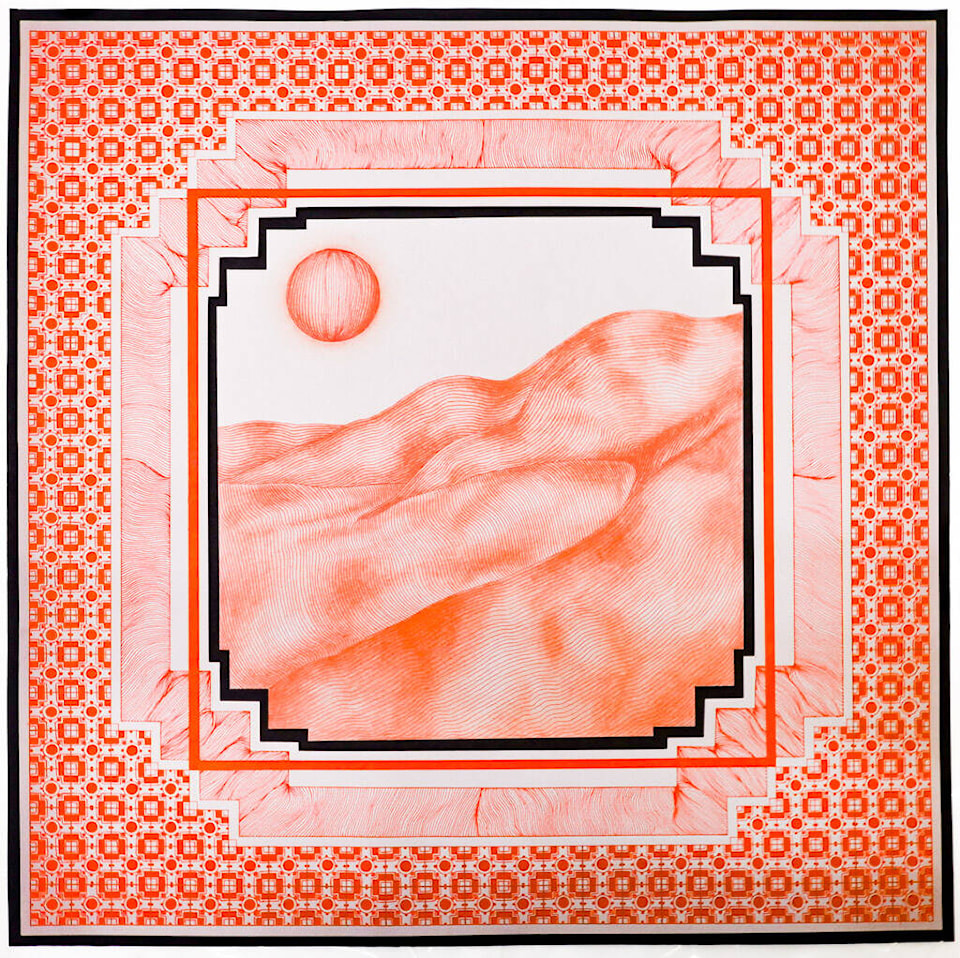
The United Nations Office of Humanitarian Affairs reported that at least 576,000 Palestinians are on the brink of famine, as Israel has blocked half of aid missions since the beginning of this year. They also report an alarming spread of disease due to lack of sanitation and clean water.
Hassan stands in solidarity with Palestinians’ fight, and raises awareness through her art and organizational efforts.
“Because we are facing an ethnic cleansing, maintaining culture and building on culture is a form of resistance against it.”
Seated in her studio, Hassan continues to embroider a new Tatreez piece. She clenches her eyebrows and tries to remember her favorite Tatreez from her childhood in Nazareth. The piece depicted a wedding procession and hung on her family’s kitchen wall.
“I don’t live with it anymore but it still lives in my head.”
She says that’s the thing about art, especially Tatreez. If people are displaced, one can easily fold it up and pack it with themselves to bring anywhere.
“It’s like you’re literally carrying your heritage and culture with you.”
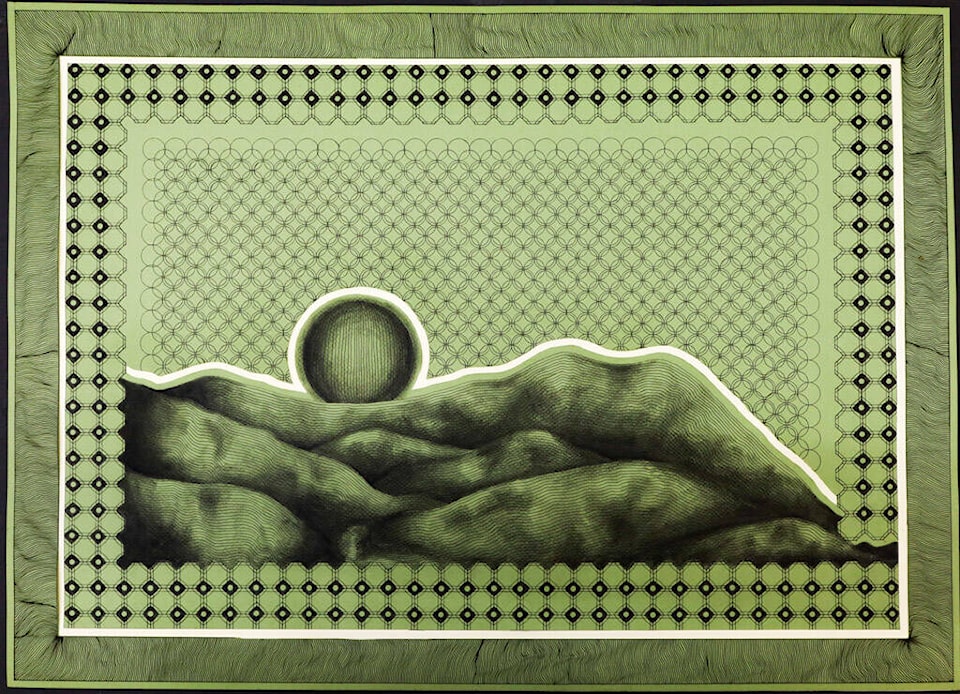
Tatreez is a type of traditional embroidery in Palestine, which is commonly used in garments and is deeply rooted within the culture. It is the language of symbols on cloth, rich in color and texture. For Hassan, simply preserving the craft is a form of resistance, at a time when their culture is so under threat.
“I am also trying to imbibe Arab-Palestinian Futurism in my art. It involves working with traditional techniques but allowing it space to add my own twist to them,” she says.
Arab-Palestinian Futurism is a concept that challenges Eurocentric representations of the pan-Arab world. It proposes an opportunity to explore Palestinian identity outside the confines of persistent trauma. Such a concept is being used by artists through their craft and films.
Within this realm of diasporic expression, Arab Futurism allows for the envisioning of speculative futures, breaking away from imperial definitions of identity and fostering a narrative that transcends historical constraints.
She compares it with the larger idea of giving Palestinian culture space for its future evolution. It means allowing Palestinians to take their art around the world, and rebuilding it by combining non-traditional techniques.
She asserts that creating Palestinian futurism within art begins with acknowledging that there is a future for Palestinians.
Traditional symbols used in Tatreez include camel eyes, palm trees, birds, sugar plates, stars and flowers. Hassan picks up a piece and traces her fingers on the threads with an unconventional composition of stairs leading up to the moon. She uses unconventional motifs outside of the traditional ones, and adds modern linework on it. Not only does she use colorful threads, but also dyes the full piece in shades of watercolors – which is not typically done in Tatreez.
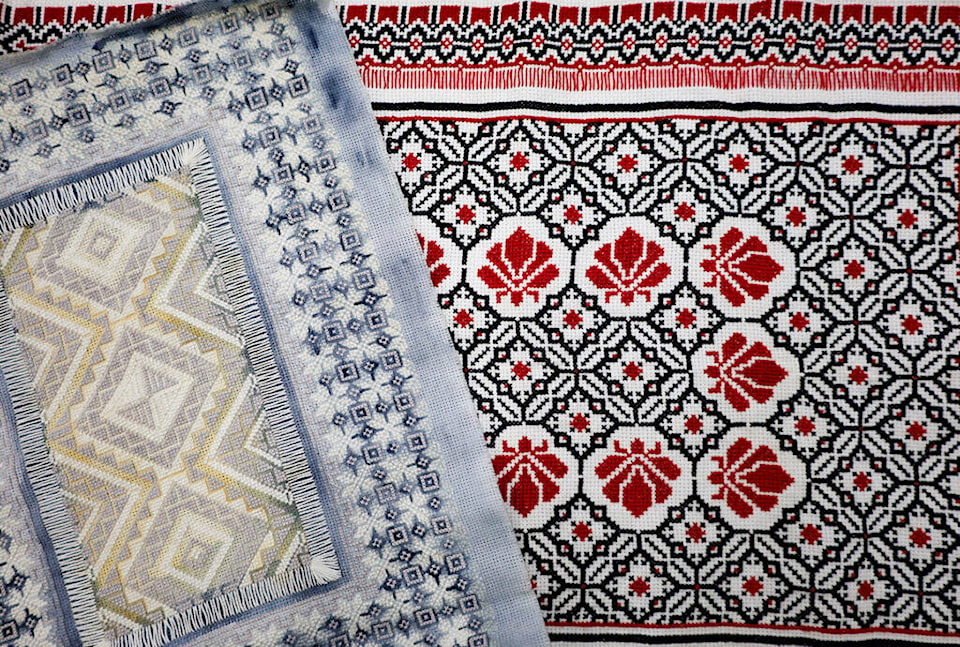
She is also experimenting with a new technique by rubbing red charcoal on the threads of the stitched piece and embossing it on parchment paper as a design.
“It can be really hard to hold on to hope… seeing the atrocities that are being faced back home and the hate crimes happening here… Continuing to make art and participating in these traditions involves the notion that we see a tomorrow, where we continue to hold on to these things, and allowing these traditions to also evolve gives a notion of like, a future,” she says.
There are other artists in B.C. that are choosing textile-based work as a medium to express resistance against their struggle, but representation of marginalized artists in B.C.’s art scene still has a “long, long way to go.”
Through her five years of being an artist in B.C., she’s felt that while small art galleries can cultivate better representation, larger ones haven’t mastered how to bring marginalized communities within their spaces. She thinks such galleries are less likely to reach out or give marginalized artists the time and resources they need. That results in fewer people exposed to their stories and work.
“Canadians are very disconnected with what’s happening all around the world,” she says, adding people often don’t understand her art or the context behind it. Hassan grapples with having to justify her identity to people.
She points toward one landscape painting in her studio.
“Palestine is not just a big desert, it has rocky mountains. They don’t look all the same, all Arab countries,” she says with a laugh.
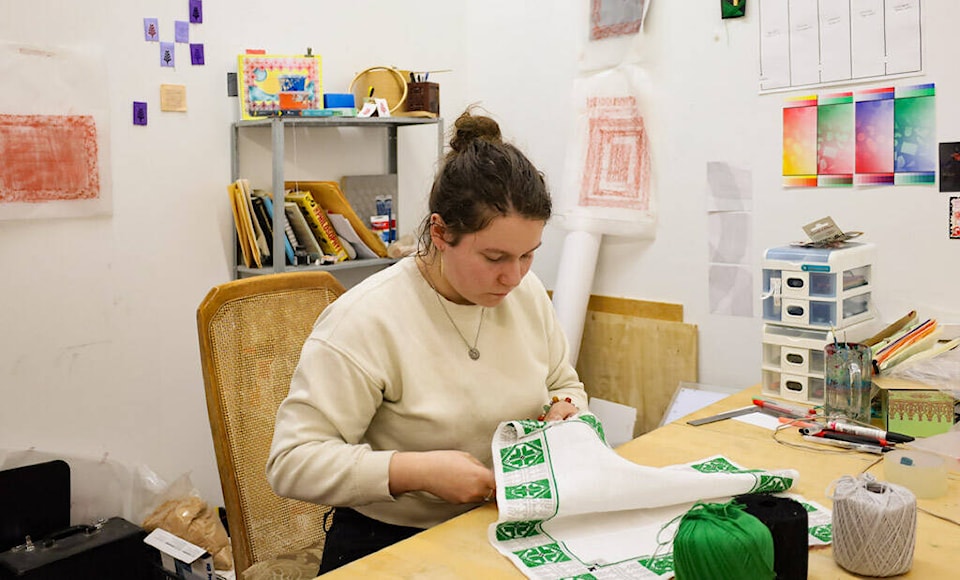
“Most people don’t seem interested in getting to know me, people just want to figure me out. It’s tough because a lot of people can’t see past ethnicity, race, sexual orientation, gender or disability.”
For Hassan, one of her challenges has been that many base their value on understanding what someone is, as opposed to who someone is.
“I look very pale and white in passing, which makes me look ethnically ambiguous, so I get a lot of questions on my race,” she says.
To her, this feels like people are reducing her identity to that one facet of who she is.
“It’s saying, like, I’m not interested in getting to know you, I just need to figure out what you are. So then I know how to interact with you.”
Hassan says that she can start the conversation by claiming she’s Palestinian, for others to understand her context, but she also doesn’t want it to be the only thing people see of her. This is also her constant dilemma as an artist.
Hassan’s art draws from a lot of patterns she was surrounded with in a Palestinian household. She references the rocky, Palestinian landscapes in a dreamy, idealized viewpoint on the homeland. She adds richness in the trees and weaves a connection to her heritage with every piece she creates.
Hassan was brought up to think there’s no money in art to make a livelihood, so she always thought of it as a hobby. But in the past five years, she has fully dedicated herself to her craft.
And with her art, she wants to bring awareness toward the struggles back home during these turbulent times. She has helped create posters for different organizations, specifically the Palestine Youth Movement, where she also helped in organizing film screenings in Vancouver.
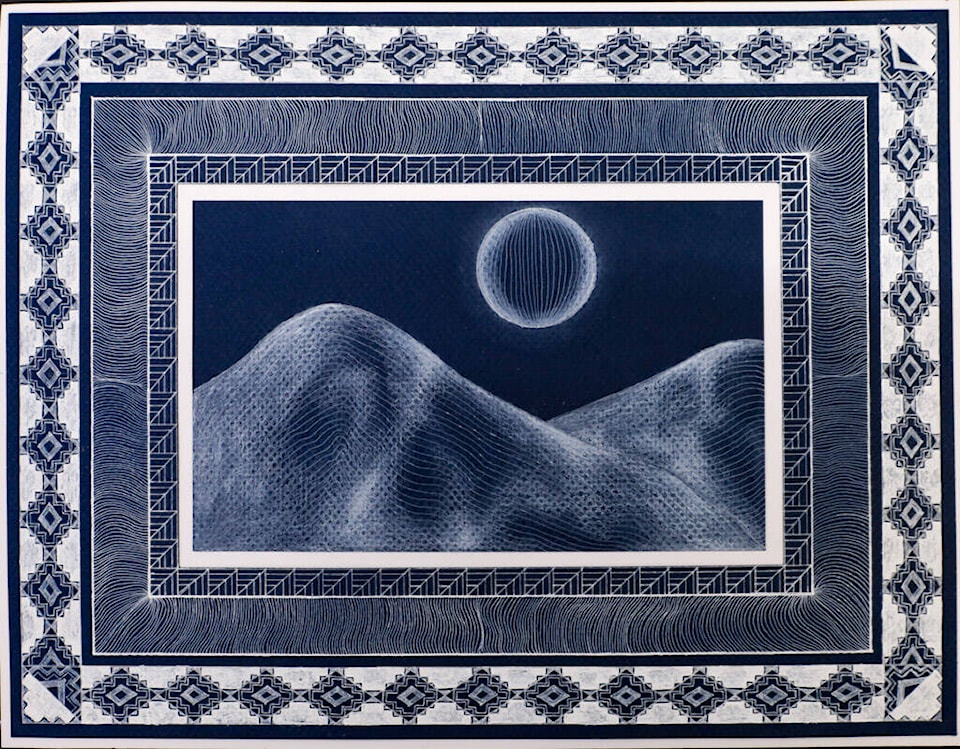
Pointing to Canada’s role in the displacement and assimilation of Indigenous people, Hassan says she’s trying to show the similarities in Palestine.
“Us settlers, and also Canadian politicians, then have an even greater responsibility to recognize it when it’s elsewhere … And so we’re trying to push for Palestinian voices to be heard,” she says.
“Firstly acknowledging that we do have a future is such a powerful thing. Us communally, we will hold strong, we will have a collective future…through art we gain a sense of cultural pride and envision a future for an ethnicity facing cleansing,” Hassan says.
